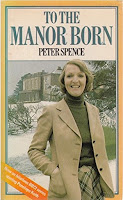 |
| (Amazon UK link) |
The book is primarily autobiographical, based on extensive journals and recollections from Paul Brand’s childhood and early experiences as a doctor. Philip Yancey has turned it into a very readable and well-structured book that I have been reading over the past couple of weeks, a chapter or two each day. It's not like a typical Yancey book; he functions more as an editor. It's written in the first person with Paul Brand narrating.
Paul Brand was born in 1914, in India, to missionary parents. In looking back, he sees a wonderful childhood, exploring the area barefoot, learning from conversations and observations. And then he was sent to boarding school in the UK, and to live with relatives. He says very little about those years, other than that he felt restricted, and often lonely.
He didn’t intend to go into medicine, but by various circumstances, which he believes were divinely ordained, he started to study basic medicine and was hooked. He specialised in hand surgery, and planned to return to India. And ended up committed to helping patients with leprosy.
Back in the 1930s, leprosy was widespread in India, with no known cure or even a way of stopping the progression of the disease. Gradually drugs were discovered that stopped it getting worse, and ensured that sufferers were no longer infectious. But if they had lost fingers or toes, or had serious scarring, they were unable to find employment or live anywhere other than a leper colony.
By extensive research, some of it funded by governments, Dr Brand gradually realised that it was the lack of pain that led to most of the disfigurement of people with leprosy. Without any sensation in their hands, patients would damage them by overuse, or by injury, and would not notice. They would develop ulcers on their feet, too, which would often spread and turn gangrenous. And even when medical staff operated on hands, or feet, the same problems would recur as patients could not feel any pain.
So alongside the biographical parts of the book are explanations about why pain is such an important benefit to the majority of us who feel it. The author goes into a lot of detail about how we feel pain, and I have to admit that I skimmed over some of the technical and medical details, as well as some of the descriptions of surgeries. I’m quite squeamish, and had no need to learn about which tendons had to be attached or removed. I also skipped over the sections about using animals for research, something which was much commoner then than it is now.
But most of the text is very readable, and once again I found it quite hard to put down at times. I knew the outline of the story - that Dr Brand was one of the pioneers in both surgery and healing techniques for people with leprosy. Without his research, and his extensive care and education of patients, leprosy would still be a much more widespread disease and problem than it now is.
I was also reminded about how important it is to listen to aches and pains. Brand explains that some are useful, and that our bodies respond by a kind of instinct - pulling a finger away from a hot surface, for instance, even though the pain of it may not be felt until some time later. He talks about three stages of pain, with the third one being the way we perceive it. Those who are positive and upbeat are likely to find a situation much less painful than those who dread it, or who are depressed about their illness.
He also stresses the importance of support, of comfort, and of knowing that one can do something about a situation. He gives examples such as indigestion problems, where some people give in and assume they’re permanent, some want whatever a doctor can do, and some want to find out how to change their lifestyle to avoid future problems.
Stereotyping, perhaps, and of course it’s not always that straightforward. But the principles are good. He points out, gently, that habits such as smoking or overeating will lead to health issues. However, he doesn’t do this from a moralistic point of view, and doesn’t pass judgement on his patients. And similarly with former leprosy sufferers, he helps them understand what they can do to assist their healing, without criticising or condemning them when they forget, or ignore his advice.
At the end is an epilogue comparing and contrasting the AIDS epidemic of the 1990s (when the book was first published) with leprosy as it was early in the century. Again, the author makes no judgement, but does make some interesting points.
It’s a very readable book, and I would recommend it to anyone interested in this topic. There's an underlying Christian ethos, but it's very low key and not at all pushy.








